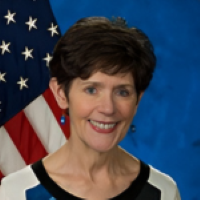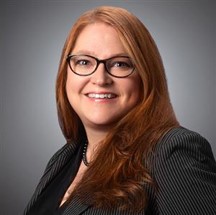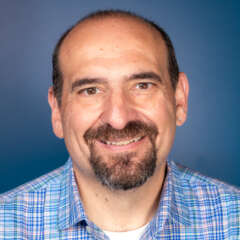Speakers
5 speakers
Date & Time
On Demand
Webinar
Technology
Army Lt. Gen. Telita Crosland, the director of the Defense Health Agency, said in December there may be no more important topic for the agency than technology and digital transformation. Crosland said the agency’s principal focus is on how to re-design health care in the face of scarcity and distance.
The Veterans Health Administration has been on the forefront of medical innovation since the 1960s with the development of the cardiac pacemaker. VHA has a history of transforming healthcare over the last six-plus decades.
And when we talk about healthcare transformation, the National Institutes of Health has been at the center of it all for over 100 years. NIH has had 171 scientists who won the Nobel Prize conduct their work at NIH, or were supported by NIH funds. Their studies have led to the development of MRI, understanding of how viruses can cause cancer, insights into cholesterol control and knowledge of how our brain processes visual information, among dozens of other advances.
These are just three examples of many ways agencies are influencing, driving and funding how healthcare, its delivery model and the doctors, nurses and other healthcare practioners at the heart of these efforts will serve people over the next decade.
All of these changes and many others are putting the patient more in charge of their healthcare than ever before.
“We are full speed ahead and getting after digitizing our healthcare delivery. We are focusing on the health care outcomes versus productivity, and that’s requiring us to look at a digital approach,” said Naomi Escoffery, the chief accelerator officer and innovation program manager for the Defense Health Agency, on the discussion Navigating the Future of Healthcare Transformation, Measurement and Integration. “It is requiring us to look at how we are seeing our actual beneficiaries, how we’re seeing our providers, and we’re really making them a CEO of their healthcare through data. You might have heard MyMilitaryHealth as an actual initiative that we’re doing, which is really bringing that digitization to the military, bringing the hospital to the patient.”
Using data to treat the person, not the disease
And by being the CEO, the patient can decide whether they want a telehealth visit, an appointment with a doctor in person, or a little of both.
The idea is by harnessing data in new and better ways, DHA can treat the person, not the disease, but also give doctors and nurses advanced knowledge of their patients’ needs.
“Let’s leverage what we already know about the patient. We use data and every social media platform in every probably place within our own places of business that we use data, so why not take that same approach to seeing you as a complete human and helping you be well, so that way you can live a full life,” Escoffery said.
This concept of the patient being the CEO of their own healthcare isn’t necessarily new. But Dr. Carolyn Clancy, the assistant under secretary for health for discovery, education and affiliate networks at the Veterans Health Administration in the Department of Veterans Affairs, said the understanding of how to manage your healthcare is what is different today.
“The idea of making data actionable, and something close to real time is what is driving a whole lot of this,” Clancy said. “Between new directions and artificial intelligence in digital health, and frankly, a lot faster, cheaper computing power, we have capabilities that we simply haven’t had before. It’s a very, very exciting time. But at the same time, patient engagement has got to be number one because that is the ultimate test of whether we’re transforming in a meaningful way that will have the lasting impact on, in our case, veterans, or any patients’ lives and outcomes.”
One way the VHA is putting the patient at the center of their healthcare is through a project called “Reimagining Veteran Healthcare,” which focused on using a value-driven framework to drive transformational change.
Improved infrastructure driving change
Clancy said one theme that emerged from meeting with and hearing from veterans is mental telehealth care was “lifesaving.”
“But as they got more into it, they didn’t really have the space to talk about some of the issues in their lives, which happened to be the people who shared living space with them, in a way that was private,” she said. “Some people missed seeing other veterans, which is something that’s always traditionally said about people coming into our system. So it was a bit all over the map, not a real clear-cut set of trends. But what I took from it is, it’s really important to be asking those questions, and designing a system that has multiple options that can meet a broad array of needs.”
And because patients have such a range of needs, the way doctors and nurses use data to personalize care and take even more advantage of tools like genomics through an electronic health record puts the person even more at the center of their healthcare.
Dr. Josh Denny, the chief executive officer of the All of Us Research Program for the National Institutes of Health in the Department of Health and Human Services, said the infrastructure to have a smarter electronic health record, better evidence based decisions, while keeping the user interface straightforward and simple is a big difference today and driving a lot of transformation in the medical industry.
“We can also do much smarter prediction of health, just like we learned, maybe 70 years ago, about the power of things like cholesterol, and then later smoking and and control of blood pressure to better cardiovascular outcomes,” he said. “I think we’ll be learning the same thing from many other kinds of measures. Whether it will be just about genetic code or zip codes, which matter a lot too. And thinking about the power of environmental exposures, things that we eat, all those things will eventually come into play as we think about better individualized medicine. But I think it’s going to take the power of data, it’s going to take individualization behind it, and I think we can become smarter to implement these data over time.”
Patient-centered design
Charlotte Carito, a healthcare transformation advisor at Mercer, said to make the concept of the person being the CEO of their care successful it all comes back to the interaction with and how the system translates between patient and provider.
Public and private sector organizations must keep patient engagement at the center of all the changing technologies, policies and processes.
“There’s so much great information about what it is you need as an individual and the standard of care for you. But how does the individual translate that and communicate that with the provider? I think it’s going to be our next frontier,” Carito said.
Like the VA, Carito said industry is bringing users into the design and planning phase before the electronic health records or systems move into production.
Escoffery said DHA’s new Accelerate Care Transformation initiative is pulling patients, providers, beneficiaries and others together as they design the system.
“We’re able to take five sites and really give them the tools, the autonomy and the space to say, ‘Hey, how can we leverage all this data that we have? How can we look at best ways to approach our beneficiaries? What things do we not need to include anymore? What things can we take away to better the patient experience?’” she said. “We started off with the providers and now we’re opening up that aperture to our beneficiaries in the local communities of those sites to be able to really create a franchise model, if you will, to transform care.”
Carito added the goal of all of these efforts is for the patient and doctor to perform as a team.
“If you are the expert in your own care, what are the tools that you have to communicate, to engage with my system and to trust, to know when a quick decision needs to be made based on my health? How do I get action from my team?” she said. “I think there is so many different tools now and there’s so much coming to the surface in terms of the amount of information that’s available to really help you and your provider make the best path forward for treatment and wellness. It’s really a very exciting time. It’s just a lot so we got to figure out how do we get that CEO position to really engage in their own care?”
Learning objectives:
- Status of health care in the last 3-5 years and the power of data
- What does transformation look like and how are we measuring it
- A deeper dive into metrics
Speakers

Naomi Escoffery
Chief Accelerator Officer and Innovation Program Manager
Defense Health Agency

Dr. Carolyn Clancy
Assistant Under Secretary for Health for Discovery, Education and Affiliate Networks (14)
Veterans Health Administration

Dr. Josh Denny
Chief Executive Officer, All of Us Research Program
National Institutes of Health

Charlotte Carito
Healthcare Transformation Advisor
Mercer

Jason Miller
Executive Editor
Federal News Network
Please register using the form on this page.
Have questions or need help? Visit our Q&A page for answers to common questions or to reach a member of our team.

